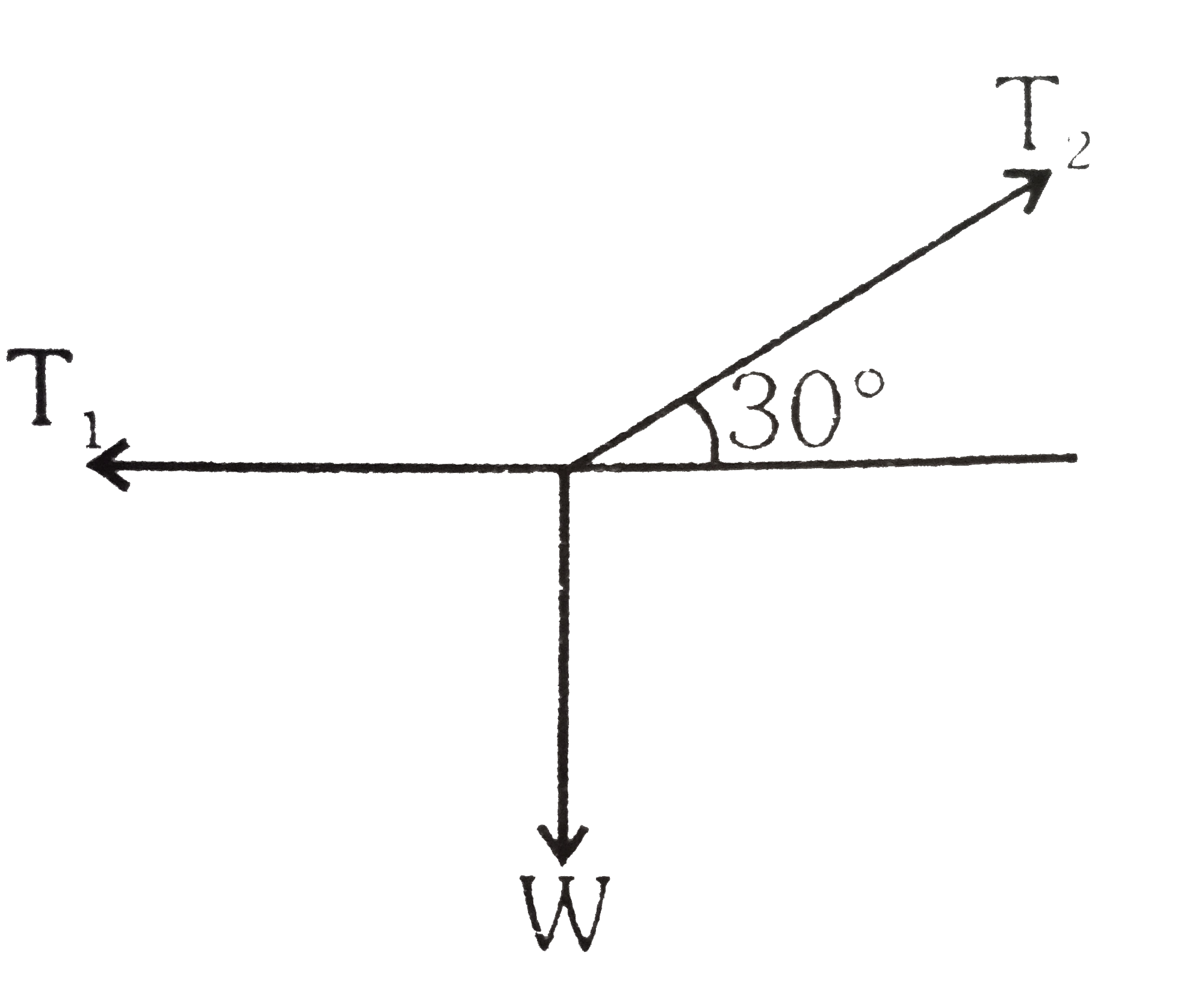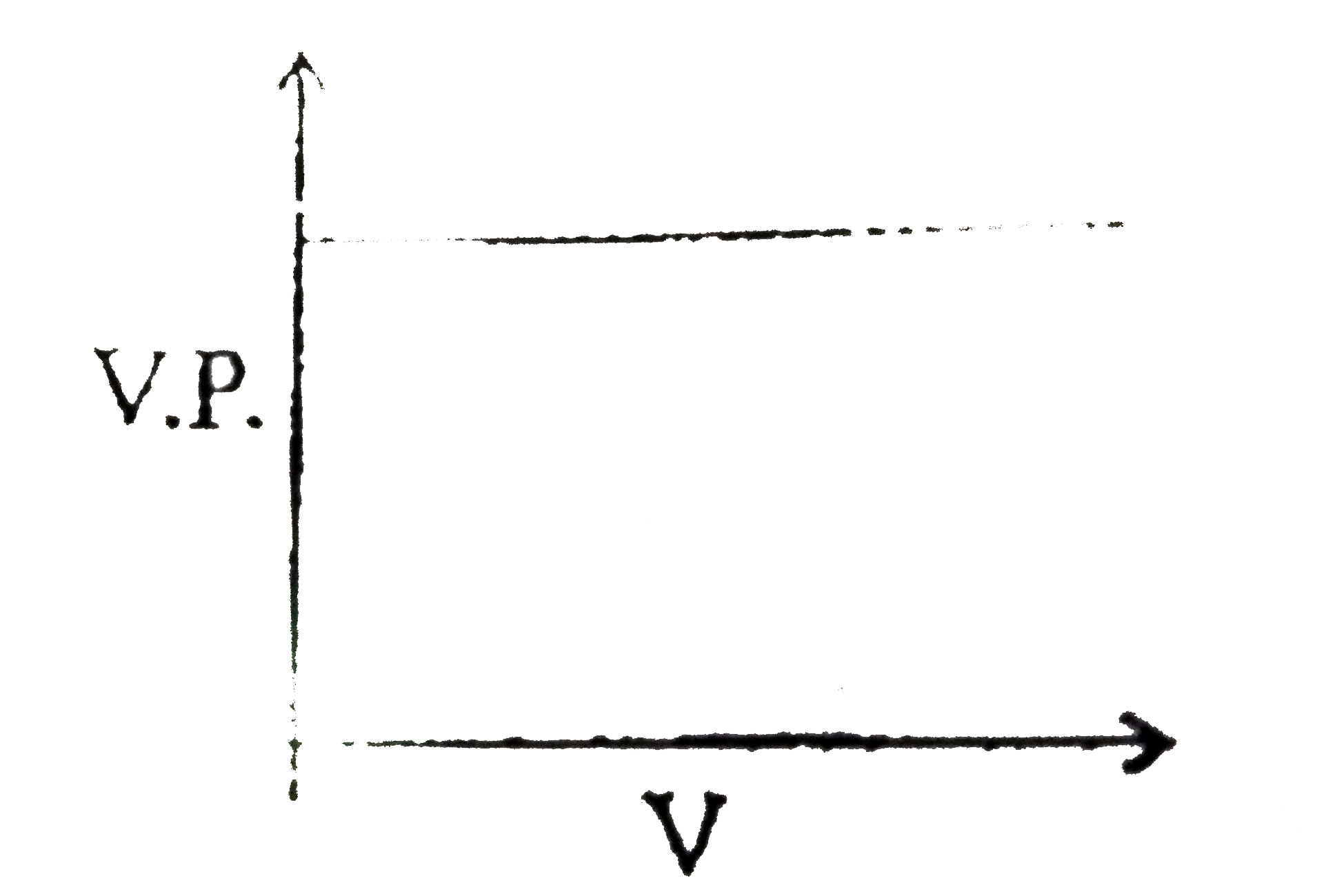In the figure given, the system is in equilibrium. What is the maximum value that W can have if the friction force on the 40N block can not exceed 12.0N?
 Solution in Gujrati
Solution in Gujrati
3.45N
6.92N
10.35N
12.32N
The correct Answer is:B
The free-body diagram of the block is as shown in adjacent figure.
∵(fs)max=12.0N (Given)
∴(T1)max=12.0N
The free-body diagram of knot is as shown in figure.
T2sin30∘=W ....(i)
T2cos30∘=T1 ...(ii) Divide (i) by (ii), we get
tan30∘=WT1
or W=T1tan30∘=0.577T1
∴Wmax=0.577(T1)max
=0.577×12.0N=6.92N


Topper's Solved these Questions
- NEWTONS LAWS OF MOTIONBOOK - ALLEN CHAPTER - NEWTONS LAWS OF MOTIONEXERCISE - EXERCISE-II
112 Videos
- NEWTONS LAWS OF MOTIONBOOK - ALLEN CHAPTER - NEWTONS LAWS OF MOTIONEXERCISE - EXERCISE-III
28 Videos
- NEWTONS LAWS OF MOTIONBOOK - ALLEN CHAPTER - NEWTONS LAWS OF MOTIONEXERCISE - SWOE
44 Videos
- NEWTON'S LAWS OF MOTION & FRICTIONBOOK - ALLEN CHAPTER - NEWTON'S LAWS OF MOTION & FRICTIONEXERCISE - EXERCISE (JA)
4 Videos
- RACEBOOK - ALLEN CHAPTER - RACEEXERCISE - Basic Maths (Wave Motion & Dopplers Effect) (Stationary waves & doppler effect, beats)
25 Videos
Similar Questions
A particle is in straight line motion with uniform velocity A force is not required
View SolutionAssertion: The driver in a vechicle moving with a constant speed on a straight road is in a non-inertial frame of referance.
Reason: A reference frame in which Newton's laws of motion are applicable is non-inertial.
View SolutionA 2000 kg rocket is set for vertical firing the exhaust speed is 400 m/s to given an initial upward acceleration of 10m/s2. Find out the amount of gas ejected per second to supply the needed thrust (g=10m/s2)
View SolutionA piece of wire is bent in the shape of a parabola y=kx2 (y-axis vertical) with a bead of mass m on it. The bead can slide on the wire without friction. It stays at the lowest point of the parabola when the wire is at rest. The wire is now accelerated parallel to the x-axis with a constant acceleration a. The distance of the new equilibrium position of the bead, where the bead can stay at rest with respect to the wire, from the y-axis is:
View SolutionThe frequency of a radar is 780 MHz. After getting reflected from an approaching aeroplane, the apparent frequency is more than the actual frequency by 2.6 kHz. The aeroplane has a speed of
View SolutionThe coefficient of static friction between the two blocks shown in figure is μ and the table is smooth. What maximum horizontal forced F can be applied to he block of mass M so that the block move together?

View SolutionCan coefficient of friction exceed unity ?
View SolutionBlock A in figure weights 90 N. The coefficient of static friction between the block and the surface on which it rests is 0.3. The weight w is 15N, and the system is in equilibrium. Find the friction force exerted on block A.(b) Find the maximum weight w for which the system will remain in equilibrium.
View SolutionThe system shown in the figure is in equilibrium The maximum value of W, so that the maximum value of static frictional force on 100kg. body is 450N, will be:

View SolutionIf the system is in equilibrium, the magnitude of friction acting on block B shown in the figure is

View SolutionThe block A in the given figure is of mass 10sqrt(3) kg The coefficient of friction between the block and the surface on which it rests is 0.5. Find maximum mass of block B possible such that the system will be in equilibrium is.
View SolutionThe maximum value of F which can be applied on the system shown in figure so that both blocks move together with same acceleration is
View Solutionदिए गए चित्र में निकाय सम्य्वस्था में है W का अधिकतम मान क्या होगा यदि 40 N के गुटके 12.0 N से अधिक घर्षण बल न लगे

View Solutionनिम्न चित्र मे प्रदर्शित निकाय सन्तुलन अवस्था में है। W का अधिकतम मान, जिससे 100 kg. के पिण्ड पर स्थैतिक घर्षण बल का अधिकतम मान 450 N हो, होगा :-

View Solutionप्रदर्शित चित्र में निकाय साम्यावस्था में है, W का अधिकतम मान क्या हो सकता है यदि 40 N के ब्लॉक पर घर्षण बल 12.0 N से अधिक नहीं हो ?

View SolutionThe coefficient of static friction between the two blocks shown in figure is μ and the table is smooth. What maximum horizontal forced F can be applied to he block of mass M so that the block move together?

View Solution
